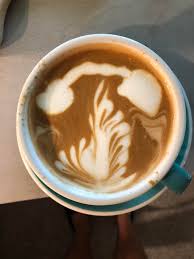Don’t order a latte: The rules of drinking coffee in Italy

Islamabad: Italians love coffee. But first-time visitors are often unaware of the many unwritten rules when it comes to ordering and drinking it. After spending a month in Rome with my wife and two young daughters – and spending an inordinate amount of that time drinking coffee in seemingly every neighbourhood in the city – I’m here to help you crack the Italian caffeine code.
First things first. It’s early morning and you’re heading to a bar. No, you’re not getting a beer or glass of wine – well, maybe you are, but I don’t want to pry into your personal life. A bar is the equivalent of a cafe here in Australia. With that said, you may end up going to the same place in the early evening for an aperitif, or to settle in with a few drinks later at night. Our local, Bar San Calisto (barsancalisto.it) in Trastevere, was like Jekyll and Hyde – in the mornings it was peaceful, with locals lingering over coffee and pastries; by nightfall it was packed and pumping, with crowds of people spilling out into the piazza outside drinking bottles of red-label Peroni.
But back to your morning caffeine fix – you’ll need to order first, and that’s often at a separate counter to the barista, where a cashier sits at a cash register. After making your order and paying, go to the bar with your receipt and they’ll ask what you want.
Forget your grande, your venti and any of those other Italian words the US has co-opted to describe the various bucket-sized containers their major coffee chains use. There’s no Australian small/medium/large here either. It’s one-size-fits-all, dependent on the style of coffee you’re ordering.
And speaking of styles, if you simply ask for a coffee (un caffe), you’ll get an espresso, a shot of black coffee in a tiny cup. An Americano is a shot with extra hot water. A cappuccino is a close equivalent to a flat white in Australia, so it will not come dusted with chocolate.
Ask for a latte, and you’ll be given a glass of milk. That’s unsurprising, as latte means milk in Italian. If you want the rough equivalent of a caffe latte, ask for a cappuccino.
It will usually cost you more to drink your coffee sitting at a table (a tavola) than standing at the bar (al banco). With that said, at Bar San Calisto, even if you sat down, the coffee only cost €1 ($1.60) and the pastries were €90¢. By contrast, when we arrived half an hour before opening time at a museum in an upmarket part of Rome and ducked into a cafe across the road, it cost €16 for two coffees and two hot chocolates. So, prices very much depend on location.
One last thing. Italians generally don’t drink cappuccino or other milky coffees after about 11am, and especially not after lunch or dinner. These are considered breakfast drinks. I did order a macchiato after lunch one afternoon. Although I was not arrested, and the barista did make it for me, I swear there was a look of slight disdain in his eyes. But I lived to tell the tale. And the coffee was great.





